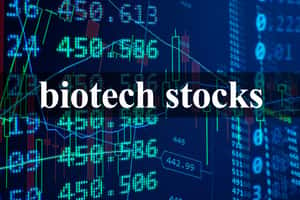The banking sector experienced a free fall in March 2020 as the coronavirus pandemic hit the global economy fast and hard. Banks faced large potential loan losses when unemployment skyrocketed and gross domestic product dipped as the public health crisis grew, making it difficult for borrowers to service their outstanding debt. In addition to the pandemic, the Federal Reserve’s dovish monetary policy, in which it has promised to keep interest rates low for the foreseeable future, hurt the banking sector significantly.
While the banking space is not out yet out of the woods, there has been rising optimism among investors, and the market is now seeing a rotation into banking stocks. Long-term Treasury yields are rising, which is an indication that the economy is improving. This, coupled with the latest government recovery bill that just passed in the U.S. Senate, is expected to boost borrowers’ loan repayment capacity and to drive easier lending conditions.
The sharp market sell-off last week suggests that the market may further correct this this month on existing concerns, primarily inflation, unemployment data and a rally in bond yields. So, the market is currently anything but certain and investing in individual stocks could be risky. Exchange traded funds (ETFs) help one mitigate this risk because they hold broad and diversified stock exposure at minimal operating costs.
Given the favorable backdrop, to play the economic recovery, we think it wise to bet on ETFs Financial Select Sector SPDR Fund (XLF), SPDR S&P Regional Banking ETF (KRE), iShares U.S. Financial ETF (IYF), and SPDR S&P Capital Markets ETF (KCE) on every dip.
Financial Select Sector SPDR Fund (XLF)
XLF is one of most popular and efficient ETFs for financial exposure. The fund offers extremely liquid exposure to the heavyweights in the U.S. financials segment, including financial services, insurance, commercial banks, capital markets, mortgage finance, consumer finance, and real estate. XLF’s investment objective is to provide investment results that correspond to the performance of the S&P Financial Select Sector Index, which is an effective representation of the S&P 500‘s financial sector. .
XLF has an MSCI ESG Fund Rating of AA based on a score of 7.67 out of 10. The ETF has $36.35 billion in AUM and an expense ratio of 0.12%. The fund pays an annual dividend of $0.60, yielding 1.81%.
The fund currently holds 65 companies, with Banks leading the way with a 39% weighting. This is followed by a 25.5% and 17% weighting in the Capital Markets and the Insurance sectors, respectively. The fund’s top three holdings are Berkshire Hathaway Inc. Class B (BRK.B), JPMorgan Chase & Co (JPM) and Bank of America Corp (BAC).
XLF closed yesterday’s trading session at $33.71, gaining more than 14.4% so far this year. The fund has witnessed net inflows of $8.9 billion over the past three months and is up 17.1% in the same period. However, the ETF has receded from its recent 52-week high of $33.96, to presently trade just 0.7% below it.
XLF’s strong fundamentals are reflected in its POWR Ratings. The ETF has an overall rating of A, which translates to Strong Buy in our proprietary rating system. XLF also has an A grade for both Trade and Buy and Hold. XLF is ranked #1 of 40 ETFs in the Financial Equities ETFs group.
Beyond what I stated above, we have also given XLF grades for Peer and Category. Get all XLF’s ratings here.
SPDR S&P Regional Banking ETF (KRE)
KRE facilitates investors’ desire to play regional banks, a sub-sector of the U.S. banking sector. While traditional financial funds are dominated by large-cap companies, this ETF maintains significant exposure to small- and mid-cap banking stocks. KRE tracks the S&P Regional Banks Select Industry, an equal-weighted total market index that covers U.S. regional banks exclusively.
KRE has an MSCI ESG Fund Rating of BBB, based on a score of 5.03 out of 10. The ETF has $3.88 billion in AUM and an expense ratio of 0.35%. KRE pays an annual dividend of $1.44, which translates into a 2.20% dividend yield.
KRE holds 128 regional banks in its portfolio and the fund’s top three major holdings are SVB Financial Group (SIVB), Regions Financial Corp (RF) and Fifth Third Bancorp (FITB).
KRE closed yesterday’s trading session at $67.30, gaining nearly 30% year-to-date. In fact, the ETF has witnessed a net inflow of $1.36 billion over the past three months and has gained 32.4% in the same period. KRE recently hit its 52-week high of $68.74 and is currently trading just 2.1% below it.
KRE’s POWR Ratings reflect a promising outlook. KRE has an overall rating of A, which equates to Strong Buy in our proprietary rating system. It an A grade for Trade and Buy and Hold. The ETF is ranked #3 in the Financial Equities ETFs group.
Click here to check additional POWR Ratings for KRE (Peer and Category).
iShares U.S. Financial ETF (IYF)
IYF delivers targeted exposure to the U.S. financial sector, making it an option for investors seeking to tilt their portfolios towards U.S. banks. The ETF seeks to track the investment results of the Dow Jones U.S. Financials Capped Index. IYF tracks the capped version of its index because it limits single positions at 10% at each quarterly rebalance, while ensuring diversification and reducing concentration.
IYF has an MSCI ESG Fund Rating of A based on a score of 6.39 out of 10. The ETF has $1.71 billion in AUM and an expense ratio of 0.42%. The fund pays an annual dividend of $1.73, yielding 2.40%.
The fund has a 31.5% exposure to Diversified Financials. This is followed by a 27% and 18% weighting in the Banking and the Real Estate sectors, respectively. The top three among the fund’s 230 holdings are BRK.B, JPM and Visa, Inc. (V).
IYF closed yesterday’s trading session at $73.41, gaining nearly 10% year-to-date. In fact, the ETF has witnessed a net inflow of $161.2 million over the past three months and has gained 12.2% in the same period. IYF recently hit its 52-week high of $74.44 and is currently trading just 1.4% below it.
It is no surprise that IYF has an overall rating of A, which equates to Strong Buy in our POWR Ratings system. IYF also has an A grade for Trade and Buy and Hold. It is ranked #6 in the Financial Equities ETFs group.
In addition to the POWR Ratings grades I’ve just highlighted, you can see the IYF’s ratings for Peer and Category, here.
SPDR S&P Capital Markets ETF (KCE)
KCE offers targeted exposure to a sub-industries of the U.S. financial sector, including asset management & custody banks, diversified capital markets, financial exchanges & data, and investment banking & brokerage. KCE tracks the S&P Capital Markets Select Industry, an equal-weighted total market index that covers the capital market segment exclusively.
KCE has an MSCI ESG Fund Rating of BBB based on a score of 4.60 out of 10. The ETF has $67.73 million in AUM currently and an expense ratio of 0.35%. The fund also pays an annual dividend of $1.66, translating to a 2.05% dividend yield.
As KCE is an equal-weighted portfolio. It offers the potential for unconcentrated industry exposure across large-, mid- and small-cap stocks. KCE has more than 45% exposure to the asset management & custody banks industry. This is followed by the investment banking & brokerage, and financial exchanges & data industries, with 32% and 22% weightings, respectively. Of the fund’s 58 constituents, the top three holdings by XLRE are Affiliated Managers Group Inc. (AMG), LPL Financial Holdings Inc. (LPLA) and Interactive Brokers Group Inc. (IBKR).
KCE has gained 9% so far this year to close yesterday’s trading session at $82.11. The ETF has witnessed a net inflow of $19.7 million over the past three months and is up nearly 11.5% in the same period. KCE had hit its 52-week high of $83.56 on March 1, 2021 and is currently trading just 1.7% below it.
KCE’s POWR Ratings are consistent with its promising prospects. KCE has an overall rating of A, which equates to Strong Buy in our proprietary rating system. It has an A grade for both Trade and Buy and Hold. The ETF is ranked #25 in the Financial Equities ETFs group.
Click here to see the additional POWR Ratings for KCE (Peer and Category).
The POWR Ratings are calculated by considering 118 different factors with each factor weighted to an optimal degree.
Want More Great Investing Ideas?
9 “MUST OWN” Growth Stocks for 2021
How to Ride the 2021 Stock Market Bubble
5 WINNING Stocks Chart Patterns
K.I.S.S. for the March Stock Market
XLF shares were trading at $34.44 per share on Monday afternoon, up $0.73 (+2.17%). Year-to-date, XLF has gained 16.82%, versus a 3.56% rise in the benchmark S&P 500 index during the same period.
About the Author: Sidharath Gupta

Sidharath’s passion for the markets and his love of words guided him to becoming a financial journalist. He began his career as an Equity Analyst, researching stocks and preparing in-depth research reports. Sidharath is currently pursuing the CFA program to deepen his knowledge of financial anlaysis and investment strategies. More...
More Resources for the Stocks in this Article
| Ticker | POWR Rating | Industry Rank | Rank in Industry |
| XLF | Get Rating | Get Rating | Get Rating |
| KRE | Get Rating | Get Rating | Get Rating |
| IYG | Get Rating | Get Rating | Get Rating |
| KCE | Get Rating | Get Rating | Get Rating |





